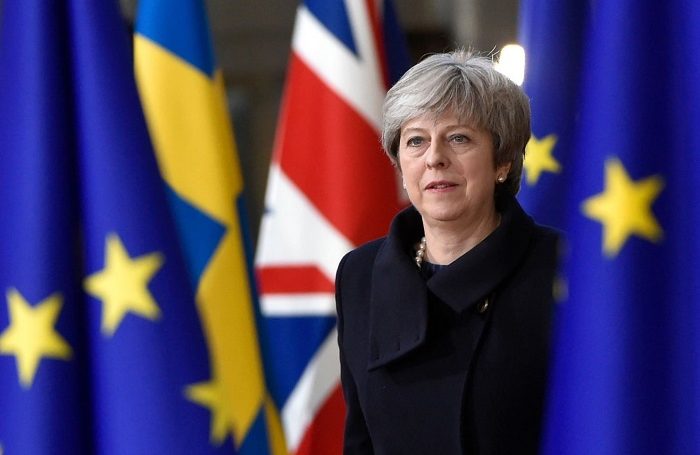
One of the recurring cries of observers of the Brexit process is that ‘the clock is ticking’: Once the UK submitted its formal notification to leave the European Union on 29 March 2017, it started a process with a two-year time limit.
Now, one year later, the question to be asked is whether there’s enough time to draw up a deal.
For most of the past year, the discourse has been that progress has been slow and that problems have abounded. The precipitate decision by Theresa May to hold a general election shortly after that notification meant two months were immediately lost, while the failure to achieve ‘sufficient progress’ in October 2017 produced another two month-long delay.
And yet, we now find ourselves with the resolution of a number of central issues, a draft Withdrawal Agreement that is three-quarters agreed by both the EU and the UK and a mandate is in place for the future relationship negotiations that will begin once the UK withdraws.
The rapidity of the movement up to this situation, especially in the past month, suggests that things are on track to get to the planned October deadline for a full text on the Withdrawal Agreement, leaving enough time for ratification before the 29 March 2019 end date.
That progress has been driven by three main factors.
The first is the increasingly strong desire by all parties to reach an agreement. Whereas the UK used to talk often of ‘no deal is better than a bad deal’, the growing awareness of the costs of a no-deal exit have seen that turn into a widespread commitment to securing more certainty for citizens and businesses.
The second is the mind-concentrating effects of the Article 50 process itself. The early delays – and the unwillingness of either side to consider an extension to a period that already means the UK won’t leave the EU until nearly 3 years after the referendum – produced a situation where constant engagement in the negotiations has been needed and the scope for further blockages was very limited. In essence, to stumble again now would cause many more problems than before.
Thirdly, the UK has been very acquiescent in the negotiations. From scheduling of agendas to substantive positions, the British government has conceded a lot of ground, far more than the EU.
In large part, this has been a result of a lack of comprehensive strategic vision on the part of London for Brexit: despite the long delay between the referendum and the Article 50 notification, the May government has largely treated this as a matter of crisis management, rather than an opportunity to create any particular vision of society. The UK is leaving the EU, but still isn’t sure why.
However, that indecision has not meant no red lines or problems.
Despite all the progress made, the remaining elements are still very substantial. They include dispute resolution mechanisms and a running disagreement about whether the Withdrawal Agreement applies to Gibraltar. And as the text currently stands, there is no scope to extend a transitional period beyond December 2020, which is likely to cause problems in the future relationship negotiations.
But the biggest issue remains the Irish dimension.
In December last year, the EU and UK agreed that, whatever happened, there would be no hard border between Ireland and Northern Ireland. The EU has since worked up that commitment into a ‘backstop’ legal text that will align Northern Ireland to the EU’s regulatory regime in the absence of alternative arrangements. The British government has said that it does not want this backstop to happen, since it would imply the imposition of barriers between Northern Ireland and the rest of the UK: at the same time, it is yet to provide an acceptable alternative proposal, either through a comprehensive future relationship or through technical solutions to border checks.
Here the inconsistency of the British position is most apparent. It wants neither barriers within the UK, nor with Ireland, but it also has been clear that it will not seek to remain part of the EU’s single market or customs union. Being outside these latter necessarily – for reasons of international law – impose border checks.
The absence of progress since December reflects these problems and suggests that the period up to October will be very difficult as at least one red line is going to have to be compromised if a deal is to be agreed.
Even if such a compromise is found, then things are still not resolved, as ratification will also be difficult. The European Council will have to agree by qualified majority, which should be unproblematic if the Irish government is satisfied with the text. But the European Parliament also has to give its approval, and it has continued to raise concerns about the protection of citizens’ rights, especially beyond the transition period: failure to take account of this might throw another spanner in the works.
And this is even before the UK parliament has its ‘meaningful vote’. The details of what this might involve remain unclear, but it looks unlikely to allow for modification of the final text. Given May’s weak position since the general election, those wanting a closer post-membership relationship – currently a majority – might apply pressure in this final phase of talks.
Much has been done and there will be a lot of pressure to reach an agreed withdrawal, but the hurdles are likely to make for another fraught year in British politics.
Further Reading on E-International Relations
- Social Media Europe and the Rise of Comedy in Global Diplomacy
- In Varietate Concordia: How Path Dependency Affects the Brexit Negotiations
- Brexit and the Fight against Terrorism in the United Kingdom
- Brexit Never Rains, But It Pours
- Lingering Effects of the UK’s Brexit Role Change
- Will Brexit Happen?